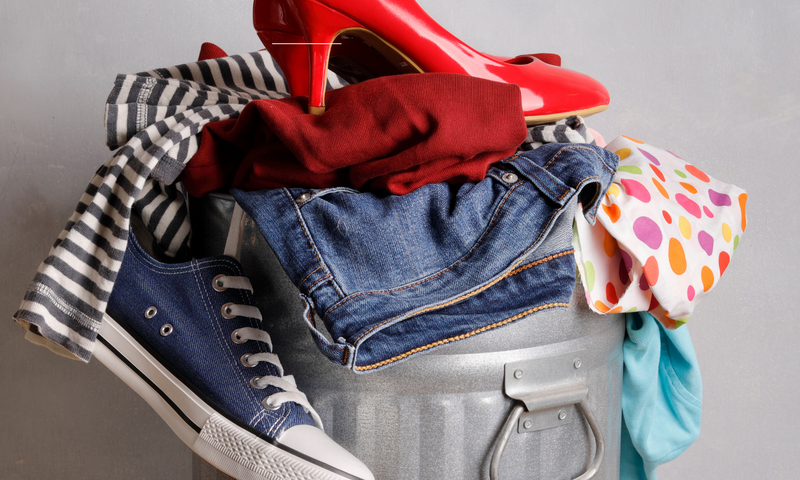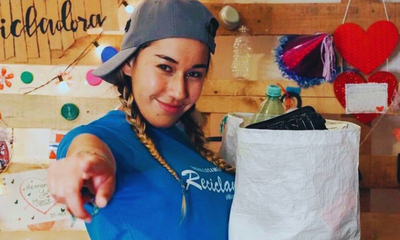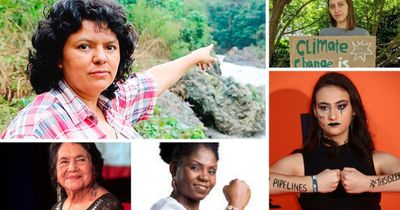Meanwhile, millions of tons of used or unsold textile garments end up in landfills in Africa and Latin America. "Fast fashion" continues to expand its market in Latin America. The Asian giant, Shein, has set its sights on Brazil, where it already has 100 factories producing its products, and aims to increase this number to 2,000 in the next five years.
Shein manufactures most of its products in China and distributes them worldwide from there. Therefore, it is now seeking to partner with factories located in strategic regions like Brazil to reduce distribution costs. This strategy is part of the company's expansion and growth plan towards Latin America, as stated by Marcelo Claure, chairman of Shein - Latin America.
Fast Fashion and the Overproduction of Garments
The textile industry is experiencing a period of overproduction, resulting in clothing being used only a few times before being discarded. In 2015, textile garment production increased by 100 percent compared to the year 2000, but the utilization of these garments decreased by 36 percent.
"Today, fashion is based on the linear 'take, make, waste' model," as stated by Global Fashion Agenda in its report, The GFA Monitor 2022.
The United States Environmental Protection Agency (EPA) specified that in 2000, 9,480 tons of new clothing were generated, while in 2018, the number reached 17,030 tons with 11,300 tons of clothing being sent to landfills.
Generation Z and Millennials are highly attracted to fast fashion due to its low prices and the convenience of e-commerce. Despite the fact that more people are sending clothes to second-hand stores, making donations, or attempting to recycle than ever before, the reality is that all new or unused garments that do not sell at retail are sold in bulk to poor countries. As a large portion of the exported material becomes waste, the apparent sales cycle is creating a significant environmental problem. Furthermore, the most popular (low-cost) fibers come from petroleum, making them impossible to recycle.
From the Mall Store to the Flea Market
The four landfills that stand out for their large amount of accumulated textile waste are located in Chile, Ghana, Kenya, and India.
Atacama Desert - Chile
One of Chile's major import cities is Iquique, a tax-free zone where over 2,000 companies of all kinds operate various businesses, including textiles. According to the United Nations in 2021, the country received 126,000 million tons of clothing mostly from China, the United States, and the Republic of Korea.
Upon arrival, different companies select garments based on their quality and prepare them for reexport and sale in various countries in Latin America, Asia, and Africa. Lower-quality garments stay in the country and begin to be distributed in different markets by truckers.
Finally, what is not sold and the waste from the importation ends up in the Atacama Desert. It is estimated that at least 39,000 tons end up in this arid zone, waiting for time to find a solution. However, the clothes take approximately 200 years to disintegrate since most fibers have been exposed to chemicals or are made of polyester, a non-biodegradable material derived from petroleum.
Kantamanto Market, Accra - Ghana
Approximately 60,000 pieces of clothing from Europe, the United States, and China arrive at this market on a monthly basis. These garments are sorted for sale; however, at least 40 percent of the received clothing is in poor condition or too old to sell. As a result, it ends up in the landfill or worse, private resellers bury the textile waste on the beach or left near the Korle Lagoon which leads to the sea.
To explain this large quantity of textile waste, locals use the phrase "obroni wawu," which means "clothes of dead white people."
"I think it should be understood that all clothing, whether new or recycled, will eventually end up in landfills. The key is to keep the garment in use for as long as possible," as stated by Mark Burrows Smith, director of Textile Recycling International (TRI).
The Second-hand Clothing Business - Mitumba in Kenya
The trade of used clothing in the African country is generating a significant amount of waste that ends up directly in open-air landfills or is burned. In 2021, 900 million garments were recorded, of which 458 million are waste that ends up in landfills, and approximately 307 million contain plastic fibers that hinder recycling, as stated in the report by the Changing Markets Foundation.
The World Recycling Capital of Textiles - Panipat, India
In Panipat, the recycling process is very different from other places. In this city, garments are sorted by color and then converted into threads used to make affordable blankets that are exported to Africa. However, the major problem that arises is that with the increase in fast fashion the amount of clothing that arrives is greater than what can be recycled. Furthermore, the use of inexpensive materials makes recycling them increasingly difficult as many of these garments are made with plastic-mixed textiles.
Latinas Committed to the Environment Stitch a Sustainable Solution.
Enterprises like Sew Loka, Ecocitex, and PazLifestyle are spreading across the continent to provide solutions to the textile waste problem generated by fast fashion. Each of them converges on the ancestral origins of creating quality pieces with lasting symbolic value.
Sew Loka
In 2013, Sew Loka opened its doors in the Barrio Logan neighborhood of San Diego, California. Owner and designer Claudia Rodríguez-Biezunski aims to create unique, avant-garde, and affordable garments and accessories using recycled and sustainable fabrics sourced locally. Each garment reflects the style of Chicano fashion, which is a combination of her Mexican and American and Latinx origins. Their designs can be purchased online at sewloka.com/shop.
@kpbssandiego From recycling bins to storefronts, Claudia Rodríguez-Biezunski gives clothes a new life at her little sewing shop called @sewloka #sewloka #chicana #mexican #mexicanamerican #chicanastyle #chicanafashion #fashion #smallbusiness #sewing #slowfashion #fastfashion #barriologan #sandiego
♬ Paradise - TELL YOUR STORY music by Ikson™
Ecocitex
Ecocitex is a Chilean company that was established in 2020 when its founders Rosario Hevia, Daniela Ehijo, Juan Luis Martel, and Andrés Hevia, who were running a project called Traviso dedicated to donating children's clothing to vulnerable children, realized that there was no responsible way to manage textile waste.
"We were generating about 400 kilograms of unusable clothing every month, and when we looked for ways to deal with this clothing, how to dispose of it, we realized that there was no sustainable way to manage it in Chile," explains Ecocitex Co-founder Hevia.
The solution they found was to buy an old spinning mill where they began processing textile waste from the unusable clothing. Currently, the project involves 32 people, 11 of whom are in the process of social reintegration. Threads, fabrics, and various products can be purchased on their website or through their network of retail points in Chile.
PazLifestyle
In March 2020, the PazLifestyle project based in New York was launched by its creators Isabella Montoya and Antoine Desjonqueres. The e-commerce platform aims to give visibility to emerging brands with sustainable practices.
"PazLifestyle was born with the purpose of bringing together sustainable Latin American brands and exposing them to the American market. It is a web platform where users can find fashion, beauty, home products, and more, all made responsibly and with an artisanal touch," as stated by its Peruvian founder, Isabella Montoya.
The e-commerce seeks to educate consumers so that they can be more aware of the real and responsible value of the products they purchase. Additionally, the company's objectives align with the United Nations Sustainable Development Goals. Therefore, the brands they promote must be in line with social responsibility, equality, and ancestral heritage. In fact, 90 percent of the brands featured on the e-commerce platform are women-founded businesses.
As fashion continues to grow, many Latinx-owned, ethical and slow fashion brands are weaving sustainable solutions for the fashion industry’s future. We featured three slow fashion brands but there are dozens of brands making a difference. The Latinx community cares about sustainability and climate change from upcycling and recycling textiles and giving them a new life to creating vegan leather from nopales or cacti. Our people are creating a change and sending a loud message to fashion corporations to think about the harmful impact to our planet and to consumers to think twice about the ethical origin of their purchase before buying.






